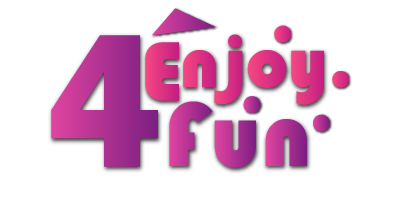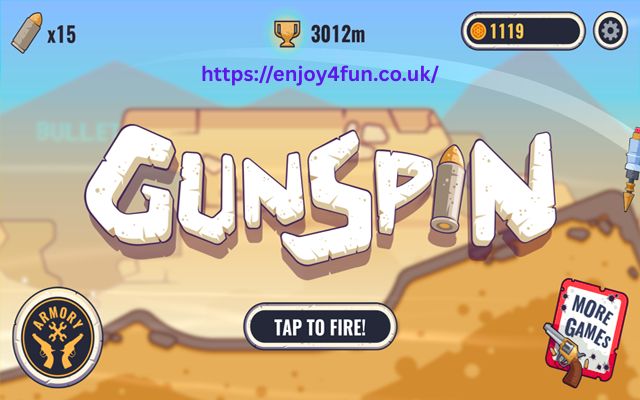If you’ve ever found yourself glued to your screen, watching your spinning gun fly across endless platforms in Gunspin GitHub, you’re not alone. The simple yet oddly satisfying physics of the game make it one of those rare titles that’s both mindless fun and surprisingly deep when you start breaking it down.
But what if you could peek behind the curtain explore how the game works, what makes the gun spin just right, and even build your own version? That’s exactly what a lot of developers and hobbyists are doing by digging into Gunspin projects on GitHub.
Let’s take a closer look at what’s out there from open-source recreations and mods to developer tips for those who want to tinker, learn, or maybe even build their own take on this viral browser shooter.
What Is Gunspin GitHub?
Before diving into GitHub, let’s rewind a bit. Gunspin GitHub is a physics-based arcade game created by Michael Brough and released on platforms like CrazyGames and Lagged.com. The core concept is simple: you shoot bullets to propel your gun through the air. Each shot changes your trajectory and momentum, and the goal is to travel as far as possible.
It’s an endless game of timing, precision, and strategy. The clever part lies in the physics balancing recoil, gravity, and limited ammo all working together in a surprisingly fluid and addictive way.
Now, for developers and coding enthusiasts, the mechanics behind that movement and recoil system are the real treasure.
Why Developers Explore Gunspin Code on GitHub
GitHub is like a playground for programmers a place to share, learn, and collaborate on all sorts of projects. You’ll find countless clones, recreations, and experiments inspired by Gunspin GitHub. Most of them aren’t official (since the original game isn’t open-source), but they’re built by fans and developers who want to understand the physics and gameplay logic behind it.
Here’s why exploring Gunspin-related repositories is so valuable:
- Learning physics-based movement: Gunspin is a goldmine for understanding angular velocity, recoil mechanics, and projectile force in 2D physics.
- Experimenting with game engines: Developers recreate it using engines like Unity, Godot, Pygame, or even pure JavaScript.
- Modding and customization: Some users create modified versions that add new weapons, gravity modes, multiplayer elements, or visual upgrades.
- Improving coding skills: Rebuilding a simple game teaches more about real-world game loops, state management, and collision handling than a tutorial ever could.
Exploring Gunspin Repositories on GitHub
If you search for “Gunspin” on GitHub, you’ll come across projects in different programming languages. Some are basic demos; others are full-scale recreations. While these are not official or licensed versions, they’re incredibly useful for learning.
Here’s what you might find in these repositories:
1. Unity-Based Gunspin Clones
Many developers prefer Unity because of its built-in physics system and easy scripting with C#. These versions usually include:
- RigidBody-based movement
- Bullet recoil forces applied on each click
- Distance tracking system
- Weapon switching and particle effects
The physics engine in Unity makes it easy to simulate recoil and spinning, so it’s a great way for beginners to experiment.
2. JavaScript and HTML5 Gunspin Projects
Some creators rebuild Gunspin for the web using HTML5 Canvas and vanilla JavaScript. You’ll see:
- 2D rendering with Canvas
- Gravity simulation through simple math equations
- Mouse-based shooting control
- Procedural backgrounds and distance counters
These versions are lightweight and fun to edit. Perfect for someone learning front-end game design or browser-based physics simulations.
3. Python / Pygame Versions
A few repositories use Python and the Pygame library to replicate the experience. Pygame is ideal for beginners easy to understand, good community support, and great for physics experiments. You’ll typically find:
- Angle-based shooting mechanics
- Velocity and acceleration functions
- Sprite animations and score systems
4. Modding Projects
A small but passionate group focuses on mods custom Gunspin-like projects that push boundaries. These might include:
- Infinite ammo or slow motion
- Dual-wield guns
- Space gravity or zero-G levels
- New gun models and effects created with Blender or Unity assets
These mods aren’t just for fun — they show how changing one mechanic can completely alter the feel of a physics game.
Understanding Gunspin’s Physics (The Core of the Game)
At its heart, Gunspin GitHub revolves around recoil physics. Every bullet fired applies an opposite force to the gun, pushing it in the opposite direction. This is a textbook example of Newton’s Third Law: for every action, there’s an equal and opposite reaction.
If you break it down in pseudo-code, it looks something like this:
The key lies in how the game continuously updates velocity and position over time, factoring in gravity, drag, and collisions. The result is that satisfying spinning motion that keeps players hooked.
For developers, experimenting with values like recoilStrength, gravity, or dragCoefficient can lead to endless variations in how the game feels.
Tips for Developers Who Want to Build or Modify Gunspin
If you’re planning to build your own version of Gunspin or just want to play around with its mechanics here are a few real-world developer tips that can save you hours of frustration:
- 1. Start Simple
Don’t try to rebuild the entire game at once. Start with just a gun sprite, basic gravity, and a shooting recoil. Once you get the motion right, everything else falls into place.
- 2. Use a Physics Engine Wisely
If you’re using Unity or Godot, let the built-in physics handle most of the calculations. Focus on fine-tuning your forces and angles instead of writing custom physics from scratch.
- 3. Keep Your Game Loop Clean
A well-organized update loop is key. You’ll be constantly applying recoil, updating positions, and checking for collisions. If the loop gets messy, bugs multiply fast.
- 4. Add Juice
Game feel matters. Add little things like camera shake, muzzle flash, recoil sound, and slow motion when you hit high speed. These tiny touches give your version its own personality.
- 5. Balance Gravity and Recoil
Too much recoil and the gun spins uncontrollably; too little and it barely moves. Fine-tune these constants that’s where the magic happens.
- 6. Don’t Ignore Optimization
Especially for browser-based versions limit draw calls, reuse assets, and manage frame rates efficiently. Gunspin’s charm is in its smoothness.
Learning Opportunities for Game Developers
Digging into Gunspin projects on GitHub isn’t just about cloning a game it’s about learning how games work. Here’s what developers usually take away:
- Physics math: How to apply trigonometry and motion formulas practically.
- Game structure: How to separate game logic, rendering, and input systems.
- Asset management: Handling sprites, backgrounds, and transitions efficiently.
- Debugging and iteration: Understanding how small code tweaks change gameplay drastically.
Even if you never publish your version, the learning process itself is worth it. It’s like rebuilding a toy from childhood just to see how the gears fit together you learn while having fun.
The Future of Gunspin-Like Games
Gunspin inspired a wave of minimalist physics games from “Kick the Buddy” style ragdoll games to “Stickman Dismount” and “Flip Master.” What makes these titles stick is their balance of simplicity and satisfying control.
For indie developers, Gunspin proves you don’t need AAA graphics or complex narratives just a single clever mechanic done well. And exploring these kinds of projects on GitHub gives you a head start in building something similar or even better.
Final Thoughts
Exploring Gunspin GitHub projects is like stepping into a creative workshop full of physics puzzles, fan-made mods, and clever experiments. Whether you’re a beginner learning how forces and angles work, or a seasoned developer looking to prototype a new mechanic, there’s something here for you.
The best part? You don’t need fancy tools or a game studio to start. Open your favorite code editor, grab a simple 2D library, and experiment. Every little change a gravity tweak, a new sound, a brighter background teaches you something about design, physics, and creativity.






